System: Southwood Water System
State ID: #82844H
County: Pierce County
A printable version of this report ![]() is also available.
is also available.
About Your Water Quality
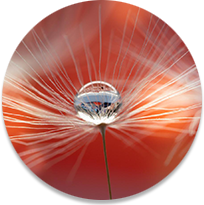 Washington Water is committed to being a leader in providing communities and customers with traditional and innovative utility services. Washington Water is proud of its service record and is staffed with courteous and knowledgeable water professionals who are dedicated to meeting your needs. While we are proud of our past record, we continually strive to improve upon the quality of services we provide to you, our valued customer.
Washington Water is committed to being a leader in providing communities and customers with traditional and innovative utility services. Washington Water is proud of its service record and is staffed with courteous and knowledgeable water professionals who are dedicated to meeting your needs. While we are proud of our past record, we continually strive to improve upon the quality of services we provide to you, our valued customer.
This 2020 Drinking Water Report is your annual update on the quality and safety of your drinking water. It includes the most recent water quality results through the monitoring period ending December 31, 2020, in accordance with state and federal regulations (not all testing is required every year). This report also provides access through references and telephone numbers to source water assessments, health effects information, and other water system topics. This allows you to make personal health-based decisions regarding your drinking water consumption and become more involved in decisions which may affect your health.
Most importantly, this report shows that your drinking water source meets all primary EPA and Department of Health standards.
We hope you find this information helpful.
Your Water System
Where does my water come from?
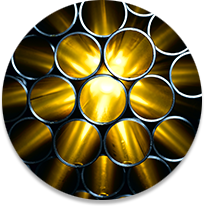 Your water comes from twenty-eight groundwater wells ranging in depth from 63 to 471 feet. Chlorine is added for disinfection purposes and, in eleven wells, to oxidize and precipitate out naturally occurring iron and/or manganese. The water is then filtered for clarity. The system was optimized for corrosion control in 2012. This is done by adding sodium hydroxide at three wells to raise the pH of this slightly acidic groundwater, which reduces the water's corrosivity.
Your water comes from twenty-eight groundwater wells ranging in depth from 63 to 471 feet. Chlorine is added for disinfection purposes and, in eleven wells, to oxidize and precipitate out naturally occurring iron and/or manganese. The water is then filtered for clarity. The system was optimized for corrosion control in 2012. This is done by adding sodium hydroxide at three wells to raise the pH of this slightly acidic groundwater, which reduces the water's corrosivity.
Washington Water's supply is supplemented by water from Lakewood Water District (ID #45550C, Pierce) and the City of Tacoma Water Division (ID #86800N, Pierce) through interties located along 176th Street East. Information on these water sources can be found in the water quality table.
If you have any questions, suggestions, or concerns, please contact our Customer Service Center, either by phone at (888) 490-3741 or contact us online.
Source Water Protection Information.
Drinking water comes from groundwater (wells and springs) and surface water (rivers, lakes, streams). Protecting these drinking water sources is key to sustaining safe drinking water supplies for this and future generations.
What you can do to protect source water:
- Ensure that your septic system is properly maintained.
- Use chemical fertilizers and pesticides sparingly, if at all.
- Don't dump any hazardous waste on the ground. This includes: motor oil, pesticides, paint or paint cans, mothballs, flea collars, household cleaners, medicines, etc.
Check the SWAP information for your water system:
The Washington State Department of Health Office of Drinking Water has compiled Source Water Assessment Program (SWAP) data for all community water systems in Washington. A source water assessment includes:
- A delineation (definition) of the source water protection area,
- An inventory of potential sources of contamination, and
- A susceptibility determination (how susceptible the source is to contamination).
An interactive map with data for your water system is available at: fortress.wa.gov/doh/swap/
Cross-Connection Control
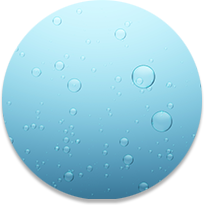 To ensure that the high-quality water we deliver is not compromised in the distribution system, Washington Water has a robust cross-connection control program in place. Cross-connection control is critical to ensuring that activities on customers' properties do not affect the public water supply. Our cross-connection control specialists ensure that all of the existing backflow prevention assemblies are tested annually, assess all connections, and enforce and manage the installation of new commercial and residential assemblies.
To ensure that the high-quality water we deliver is not compromised in the distribution system, Washington Water has a robust cross-connection control program in place. Cross-connection control is critical to ensuring that activities on customers' properties do not affect the public water supply. Our cross-connection control specialists ensure that all of the existing backflow prevention assemblies are tested annually, assess all connections, and enforce and manage the installation of new commercial and residential assemblies.
Backflow can occur when certain pressure conditions exist either in our distribution system or within the customer's plumbing, so our customers are our first line of defense. A minor home improvement project — without the proper protections — can create a potentially hazardous situation, so careful adherence to plumbing codes and standards will ensure the community's water supply remains safe. Please be sure to utilize the advice or services of a qualified plumbing professional.
Many water-use activities involve substances that, if allowed to enter the distribution system, would be aesthetically displeasing or could even present health concerns. Some common cross-connections are:
- Garden hoses connected to a hose bib without a simple hose-type vacuum breaker (available at a home improvement store)
- Improperly installed toilet tank fill valves that do not have the required air gap between the valve or refill tube
- Landscape irrigation systems that do not have the proper backflow prevention assembly installed on the supply line
The list of materials that could potentially contaminate the water system is vast. According to the EPA, a wide variety of substances have contaminated drinking water systems throughout the country as a result of poor cross-connection control. Examples include:
- Antifreeze from a heating system
- Lawn chemicals from a garden hose or sprinkler head
- Blue water from a toilet tank
- Carbonated water from a soda dispenser
Customers must ensure that all plumbing is in conformance with local plumbing codes. Additionally, state law requires certain types of facilities to install and maintain backflow prevention assemblies at the water meter. Washington Water's cross-connection control staff will determine whether you need to install a backflow prevention assembly based on water uses at your location.
Possible Contaminants
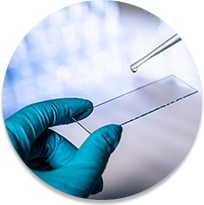 Drinking water, including bottled water, may reasonably be expected to contain at least small amounts of some contaminants. The presence of contaminants does not necessarily indicate that the water poses a health risk.
Drinking water, including bottled water, may reasonably be expected to contain at least small amounts of some contaminants. The presence of contaminants does not necessarily indicate that the water poses a health risk.
More information about contaminants and potential health effects can be obtained by calling the EPA's Safe Drinking Water Hotline at (800) 426-4791.
Common sources of drinking water — both tap and bottled water — include rivers, lakes, streams, ponds, and reservoirs (surface water), and wells and springs (groundwater). As water travels over the surface of the land or through the ground, it dissolves naturally-occurring minerals and, in some cases, radioactive material. Water can also pick up substances resulting from the presence of animals or from human activity.
Contaminants that may be present in source water include:
Microbial contaminants, such as viruses, parasites, and bacteria, which may come from sewage treatment plants, septic systems, agricultural livestock operations, and wildlife.
Inorganic contaminants, such as salts and metals, which can be naturally-occurring or result from urban stormwater runoff, industrial or domestic wastewater discharges, oil and gas production, mining, or farming.
Pesticides and herbicides, which may come from a variety of sources such as agriculture, urban stormwater runoff, and residential uses.
Radioactive contaminants, which can be naturally-occurring or be the result of oil and gas production and mining activities.
Organic chemical contaminants, including synthetic and volatile organic chemicals, which are byproducts of industrial processes and petroleum production, and can also come from gas stations, urban stormwater runoff, and septic systems.
In order to ensure that tap water is safe to drink, the Washington State Department of Health (DOH) and EPA prescribe regulations that limit the amount of certain contaminants in water provided by public water systems. The Food and Drug Administration (FDA) and Washington State Department of Agriculture regulations establish limits for contaminants in bottled water that must provide the same protection for public health.
Vulnerable Populations
Some people may be more vulnerable to contaminants in drinking water than the general population. Immuno-compromised people such as those with cancer undergoing chemotherapy, those who have undergone organ transplants, people with HIV/AIDS or other immune system disorders, some elderly, and infants can be particularly at risk from infections. These people should seek advice about drinking water from their health care providers. EPA/CDC guidelines on appropriate means to lessen the risk of infection by Cryptosporidium and other microbial contaminants are available from the Safe Drinking Water Hotline at (800) 426-4791.
Key Definitions
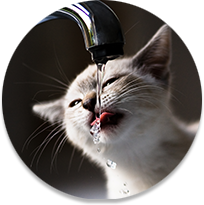 Action level (AL): The concentration of a contaminant which, when exceeded, triggers treatment or other requirements which a water system must follow.
Action level (AL): The concentration of a contaminant which, when exceeded, triggers treatment or other requirements which a water system must follow.
Lead and Copper 90th Percentile Value: Out of every 10 homes sampled, 9 were at or below this level. This must be less than or equal to the AL or additional steps must be taken.
Maximum containment level (MCL): The highest level of a contaminant allowed in drinking water. MCLs are set as close to the MCLGs as feasible using the best available treatment technology.
Maximum contaminant level goal (MCLG): The level of a contaminant in drinking water below which there is no known or expected risk to health. MCLGs allow for a margin of safety.
µmhos/cm: A measure of specific conductance.
Maximum residual disinfectant level (MRDL): The highest level of a disinfectant allowed in drinking water. There is convincing evidence that addition of a disinfectant is necessary for control of microbial contaminants.
Maximum residual disinfectant level goal (MRDLG): The level of a drinking water disinfectant below which there is no known or expected risk to health. MRDLGs do not reflect the benefits of the use of disinfectants to control microbial contaminants.
N/A: Not applicable.
Not detected (ND): The result is less than the SDRL.
ppb: Parts per billion (µg/L, micrograms per liter)
ppm: Parts per million (mg/L, milligrams per liter)
State detection reporting limit (SDRL): The minimum reportable detection of an analyte as established by DOH. If the test result is less than the SDRL, the contaminant is considered to be not detected.
Secondary maximum contaminant level (SMCL): These standards are developed as guidelines to protect the aesthetic qualities of drinking water and are not health based.
2020 Water Quality
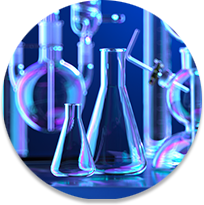 Your water is tested for more than 150 contaminants for which state and federal standards have been set.
Your water is tested for more than 150 contaminants for which state and federal standards have been set.
Tables 1 & 2 list all primary contaminants that were detected at or above the state detection reporting limit (SDRL), along with their respective MCLs. Primary MCLs (primary standards) protect public health by limiting the levels of these contaminants in drinking water.
Table 3 lists secondary contaminants of interest to many consumers, as well as any unregulated contaminant detections. Secondary contaminants have no known health effects but can affect the aesthetic properties of water (taste, odor, and appearance). Unregulated contaminants are those for which EPA has not established drinking water standards. The purpose of unregulated contaminant monitoring is to help EPA determine their occurrence in drinking water and potential need for future regulation.
Source Codes
The source codes indicate major sources of contaminants in drinking water.
- AIM: Water additive used to optimize iron and manganese removal treatment and control microbes
- BD: Byproduct of drinking water disinfection
- CH: Corrosion of household plumbing systems
- DFA: Discharge from fertilizer and aluminum factories
- DMD: Discharge from metal degreasing sites and other factories
- EN: Erosion of natural deposits
- FL: Water additive which promotes strong teeth
- LN: Leaching from natural deposits
- LX: Leaching from septic tanks
- NAT: Substances that form natural deposits
- NOM: Naturally occurring organic materials
- RF: Runoff from fertilizer use
- RGE: Runoff from glass and electronics production wastes
- RLN: Runoff/leaching from natural deposits
- RO: Runoff from orchards
- RS: Soil runoff
- SEA: Seawater influence
- SEW: Sewage
- WI: Industrial wastes
Table 1: Primary Contaminants |
||||||||||
| Inorganic Chemicals | Year Tested | Units | MCL | MCLG | Southwood Wells |
Purchased Water |
Violation? | Source | ||
| Lakewood Water1 | Tacoma Water2 | |||||||||
| Nitrate3 | 2020 | ppm | 10 | 10 | ND–6.1 | ND–2.0 | ND–4.95 | No | EN, LX, RF, SEW | |
| Arsenic4 | 2012–2020 | ppb | 10 | 0 | ND–4.4 | ND–5.0 | ND–1.4 | No | EN, RGE, RO | |
| Fluoride4,5 | 2012–2020 | ppm | 4 | 4 | ND–0.30 | ND | 0.60–0.96 | No | DFA, EN, FL | |
| Volatile Organic Chemicals | Year Tested | Units | MCL | MCLG | Southwood Wells |
Purchased Water |
Violation? | Source | ||
| Lakewood Water | Tacoma Water | |||||||||
| Trichloroethylene | 2012–2020 | ppb | 5 | 0 | ND | ND | ND–1.4 | No | DMD | |
| Disinfectant (an additive) | Year Tested | Units | MRDL | MRDLG |
System Wide |
Violation? | Source | |||
| Highest Running Average | Range | |||||||||
| Free Chlorine Residual | 2020 | ppm | 4 | 4 | 0.77 | 0.29–1.43 | No | AIM | ||
| Disinfection Byproducts | Year Tested | Units | MCL | MCLG | Highest Running Average | Range of Detections | Violation? | Source | ||
| Total Trihalomethanes (TTHM) | 2020 | ppb | 80 | N/A | 2.9 | 1.4–3.8 | No | BD | ||
| Haloacetic Acids (HAA5) | 2020 | ppb | 60 | N/A | 0.8 | ND–1.2 | No | BD | ||
Table 2: Lead and Copper |
||||||||||
| Samples are collected at customer kitchen or bathroom taps. Residences considered to be at highest risk for corrosion are selected for sampling (i.e., those with lead and copper in internal plumbing, based on specific EPA tiering criteria and available home construction details from county web sites). The number of homes sampled is based on population served by the water system. This testing is done every three years. | ||||||||||
| Primary Contaminants | Year Tested | Units | AL |
System Wide |
Violation? | Source | ||||
| 90th Percentile | Samples > AL | |||||||||
| Copper | 2018 | ppm | 1.3 | 0.52 | 0 of 35 | No | CH, EN | |||
| Lead | 2018 | ppb | 15 | 2 | 0 of 35 | No | CH, EN | |||
Table 3: Secondary and Unregulated Contaminants |
||||||||||
| Secondary Contaminants | Year Tested6 | Units | SMCL | Southwood Wells |
Purchased Water |
Violation? | Source | |||
| Lakewood Water | Tacoma Water 7 | |||||||||
| Iron8 | 2012–2020 | ppm | 0.3 | ND–0.15 | ND | — | No | LN, WI | ||
| Manganese3 | 2012–2020 | ppm | 0.05 | ND–0.13 | ND–0.03 | — | No | LN | ||
| Chloride | 2012–2020 | ppm | 250 | 2–9 | 4–10 | — | No | RLN, SEA | ||
| Sulfate | 2012–2020 | ppm | 250 | ND–10 | ND–19 | — | No | RLN, WI | ||
| Sodium9 | 2012–2020 | ppm | N/A | 6–25 | 6–12 | — | No | EN, SEA | ||
| Hardness10 | 2012–2020 | ppm | N/A | 42–78 | 49–122 | — | No | EN | ||
| Conductivity | 2012–2020 | µmhos/cm | 700 | 88–208 | 110–227 | — | No | NAT, SEA | ||
| Turbidity11 | 2012–2020 | NTU | N/A | ND–1.4 | ND–1.0 | — | No | RS | ||
| Color | 2012–2020 | color units | 15 | ND | ND | — | No | NOM | ||
| Unregulated Contaminants | Year Tested | Units | SMCL | Southwood Wells |
Purchased Water |
Violation? | Source | |||
| Lakewood Water | Tacoma Water | |||||||||
| Lead12 | 2012–2020 | ppb | N/A | ND–14 | ND | — | No | CH, EN | ||
| Copper7 | 2012–2020 | ppm | N/A | ND–0.24 | ND | — | No | CH, EN | ||
1 Washington Water's supply is supplemented on a daily basis by water from 28 groundwater sources in the Lakewood Water District, ranging in depth from 86 to 947 feet. Chlorine is added to all wells for disinfection purposes. Seven wells have filtration treatment to remove naturally occurring iron and/or manganese, and one site has GAC (granular activated carbon) filtration treatment to remove trace detections of volatile organic chemicals.
2 Additional water is purchased as needed from the City of Tacoma Water Division. This is surface water from the city's Green River Headworks Treatment Plant and water from some 20 groundwater wells. Tacoma Water provided a Water Quality Table for this report, summarizing any primary contaminants detected during most recent testing. For additional information on Tacoma Water Division's water quality, please visit their web site.
3 Nitrate can vary seasonally and can be influenced by land use and surface activity upgradient of the aquifer and within the source's sanitary control area. Please see the Special Educational Information page on nitrate in drinking water, after the data tables.
4 Most recent testing done, in accordance with the regulations. Your drinking water source was granted a 9-year monitoring waiver for most inorganic chemicals (IOC) by the DOH, based on water quality history. With a waiver, one IOC sample (28 inorganic tests) is required every 9 years, rather than every 3 years. DOH uses the monitoring waivers allowed by EPA because they save water systems money without compromising public health. Some individual inorganics like arsenic, iron, or manganese may be still be required every 3 years as a condition of the waiver. Nitrate is never waived (tested annually).
5 Washington Water and Lakewood Water do not add any fluoride. Three of Washington Water's 28 wells have very low naturally occurring fluoride. Tacoma Water fluoridates most of its sources.
6 Most recent testing done, in accordance with the regulations. Your drinking water source was granted a 9-year monitoring waiver for most inorganic chemicals (IOC) by the DOH, based on water quality history. With a waiver, one IOC sample (28 inorganic tests) is required every 9 years, rather than every 3 years. DOH uses the monitoring waivers allowed by EPA because they save water systems money without compromising public health. Some individual inorganics like arsenic, iron, or manganese may be still be required every 3 years as a condition of the waiver. Nitrate is never waived (tested annually).
7 Tacoma Water's 2020 water quality table has been included for your reference at the end of this document.
8 Investigative pre-treatment samples for two sources in 2018 were accidentally submitted to DOH as compliance samples (0.51 and 0.30 ppm iron and 0.09 and 0.17 ppm manganese). The are not included in the ranges. Pre and post-treatment samples are also tested in the field every month; all were non-detect in 2020 for iron and manganese.
9 The EPA recommends 20 ppm sodium as a level of concern for consumers who must restrict their dietary intake.
10 When reading the hardness value, 0–75 ppm is considered “soft" water, 75–150 ppm is “moderately hard," 150–300 ppm is “hard," and >300 ppm is “very hard". To convert to grains per gallon of hardness, divide total hardness by 17.1.
11 There is currently no trigger or MCL value for groundwater turbidity.
12 Lead and copper are regulated at customer taps (see Table 2 for those results), not at the source, which is what these results represent. This is because lead and copper in drinking water do not typically come from the water source. They come from the plumbing that serves, or is inside, the customer's home, from corrosion of lead and copper-containing plumbing or fixtures, or the lead solder that connects copper pipes. Two of Southwood's 28 wells showed lead detections of 14 ppb in their 2002–2020 IOC report. However, IOC samples were since collected in March 2021 and both of these wells were non-detect for lead (as will be shown in the 2021 report, next year). All other 26 wells were also ND for lead. All recent coppers were also non-detect.
About Lead
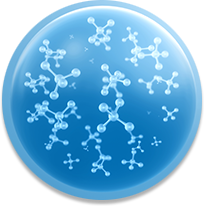 Washington Water is compliant with health and safety codes mandating use of lead-free materials in water system replacements, repairs, and new installations. We have no known lead service lines in our systems. We test and treat (if necessary) water sources to ensure that the water delivered to customer meters meets water quality standards and is not corrosive toward plumbing materials.
Washington Water is compliant with health and safety codes mandating use of lead-free materials in water system replacements, repairs, and new installations. We have no known lead service lines in our systems. We test and treat (if necessary) water sources to ensure that the water delivered to customer meters meets water quality standards and is not corrosive toward plumbing materials.
The water we deliver to your home meets lead standards, but what about your home's plumbing? In Washington state, lead in drinking water comes primarily from materials and components used for in-home plumbing (for example, lead solder used to join copper plumbing, and brass and other lead-containing fixtures). Therefore, the Lead and Copper Rule is a critical part of our water quality monitoring program, and we follow it completely. This rule requires us to test water inside a representative number of homes that have plumbing most likely to contain lead and/or lead solder. This test, along with other water quality testing, tells us if the water is corrosive enough to cause lead from home plumbing to leach into the water. If the Action Level (the concentration of a contaminant which, when exceeded, triggers action which a water system must follow before it becomes a health concern) is exceeded, either at a customer's home or system-wide, we work with the customer to investigate the issue. If the problem is system-wide, we will implement corrosion control treatment at the source before the lead levels create a health issue.
Elevated levels of lead, if present, can cause serious health problems, especially for pregnant women and children. If your home's plumbing contains lead piping or pipe fittings, lead solder, or brass fixtures that may contain lead, you can minimize the potential for lead exposure by flushing your tap for 30 seconds to two minutes before using water for drinking or cooking.
If you are concerned about lead in your water, you may wish to have your water tested by a certified lab. Information on lead in drinking water, testing methods, and steps you can take to minimize exposure is available from the Safe Drinking Water Hotline or at www.epa.gov/ground-water-and-drinking-water/basic-information-about-lead-drinking-water.
Results of our lead monitoring program, conducted in accordance with the Lead and Copper Rule, can be found in Water Quality Tables 2 and 3.
Special Educational Information
Nitrate
The major sources of nitrates in drinking water are runoff from fertilizer use and leaking septic tanks. Nitrate in drinking water at greater than 10 ppm is a health concern for infants of less than six months of age because it can disrupt the blood's ability to carry oxygen (“blue baby syndrome"). Nitrate levels may rise quickly for short periods of time because of rainfall or agricultural activity. If you are caring for an infant or you are pregnant and concerned about the current nitrate levels, you should seek advice from your health care provider.
You can help prevent groundwater contamination by having your septic tank checked periodically to make sure it is in good working order. Fertilize your lawn at the right time, pick the right product, and use the right amount. Wait until mid May or early June when heavy rains have passed so that less fertilizer will leach away. Use an organic or slow release fertilizer. When fertilizer nutrients are in slow release forms, they are available to plants over a longer period of time. This means that less nutrients are wasted or lost as pollutants.
About Monitoring Waivers (reduced monitoring)
Organic Chemicals
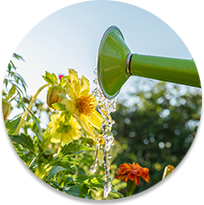 Drinking water sources are sampled and tested a minimum of every six to nine years for an array of organic chemicals including volatile organic chemicals (VOCs) and synthetic organic chemicals (SOCs), such as herbicides and pesticides. VOCs are byproducts of industrial processes and petroleum production and can also come from gas stations, urban stormwater runoff, and septic systems.
Drinking water sources are sampled and tested a minimum of every six to nine years for an array of organic chemicals including volatile organic chemicals (VOCs) and synthetic organic chemicals (SOCs), such as herbicides and pesticides. VOCs are byproducts of industrial processes and petroleum production and can also come from gas stations, urban stormwater runoff, and septic systems.
Sampling frequencies for these groups of organic chemicals can vary depending on the county in which your water system is located, whether the source has been granted a monitoring waiver, and whether there have been past detections of any of these organic contaminants.
Monitoring waivers are granted by the DOH and are based on a source's susceptibility rating (risk of contamination), water quality history, and information gathered from across the state.
If there were detections of organic contaminants obtained during the most recent round of compliance monitoring (2015–2020 for VOCs; 2012–2020 for SOCs), they are shown in the water quality data tables. If there are none reported in the tables, there were none detected.
Radioactive Contaminants
Drinking water sources are sampled and tested a minimum of every six years for radioactive contaminants (radium 228 and gross alpha). These contaminants can be naturally occurring or the result of oil and gas production and mining activities.
If there were any detections obtained during the most recent round of compliance monitoring (2015–2020), they are shown in the water quality data tables. If there are none reported in the tables, there were none detected.
Water-Use Efficiency
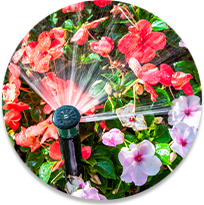 Water is a precious, limited resource. In the Pacific Northwest, drinking water for our growing population competes with other uses that include agriculture, industry, recreation, and maintaining an adequate stream flow for fish.
Water is a precious, limited resource. In the Pacific Northwest, drinking water for our growing population competes with other uses that include agriculture, industry, recreation, and maintaining an adequate stream flow for fish.
Washington Water strives to be a leader in the water industry, and we encourage our customers to be good stewards of our water resources. We monitor the amount of water we withdraw from aquifers in Washington, and track water losses along with water sold to our customers to ensure compliance.
Washington Water also continues to invest diligently in our infrastructure to reduce the amount of water lost to pipeline leaks and are updating our assessment of the impacts of climate change on water supply and demand. Using water wisely will ensure that we have enough water in dry years and for generations to come.
Water-use efficiency goals are established in accordance with WAC 246-290-830(6)(b).
Demand Goal
Washington Water's company-wide water demand goal is an annual customer consumption of less than 117,300 gallons (or 0.36 acre feet) per year, per equivalent residential unit. Washington Water monitors demand and encourages conservation through a variety of resources. Washington Water's Customer Service Department alerts customers with unusually high consumption, and provides 13 months of consumption history on billing statements to all customers. See the conservation page for more information about how you can make a difference.
Supply Goal
To control use of our groundwater sources, Washington Water established a supply goal to withdraw a maximum of 130,340 gallons (or 0.40 acre feet) per year, per equivalent residential unit. This goal is a measure of operational efficiency and adequate maintenance of pumping, treatment, and distribution systems. The difference between the supply and demand goals allows for a maximum of 10% total distribution system leakage use company-wide. Washington Water gauges and records monthly source production, and identifies treatment backwash and system flushing volumes to regularly assess supply-side conservation efficiencies. Washington Water also annually evaluates our systems' water main repair history and distribution system water losses to develop capital improvement projects for water main replacements. See the Capital Improvement Program page for current and recently completed main replacement projects.
Company-Wide 2020 Water Use Results
- Total production: 1.978 billion gallons
- Total accounted usage: 1.763 billion gallons
- Total distribution system leakage: 10.85%
Thank you
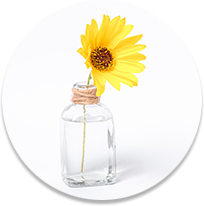 Thanks for taking the time to learn more about your water quality!
Thanks for taking the time to learn more about your water quality!
Important Contact Information
Washington Water Service
P.O. Box 44428
Tacoma, WA 98448
Office: (253) 537-6634
Toll Free: (888) 490-3741
James Jensen
Water Quality Field Supervisor
Washington State Department of Health
Northwest Drinking Water Operations
20425 72nd Ave South
Building 2, Suite 310
Kent, WA 98032-2388
(253) 395-6750
www.doh.wa.gov/community-and-environment/drinking-water
Our Water Quality Commitment:
You Can Count on Washington Water Employees to...
- Provide you with the highest quality water possible
- Sample, test, and treat (if needed) your water on a regular basis
- Work diligently to meet every water quality standard on every system, every day
- Maintain the water distribution system reliability
- Provide you with the highest level of customer service possible


